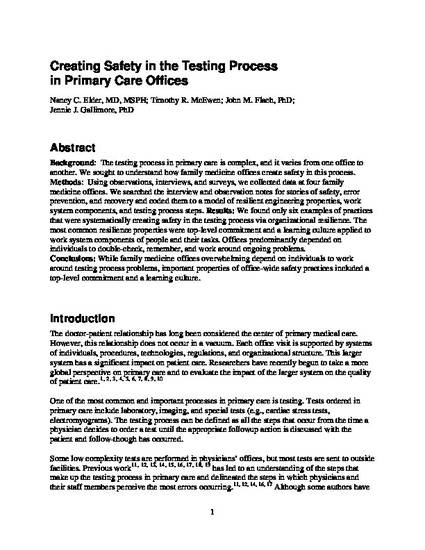
Background: The testing process in primary care is complex, and it varies from one office to another. We sought to understand how family medicine offices create safety in this process.
Methods: Using observations, interviews, and surveys, we collected data at four family medicine offices. We searched the interview and observation notes for stories of safety, error prevention, and recovery and coded them to a model of resilient engineering properties, work system components, and testing process steps.
Results: We found only six examples of practices that were systematically creating safety in the testing process via organizational resilience. The most common resilience properties were top-level commitment and a learning culture applied to work system components of people and their tasks. Offices predominantly depended on individuals to double-check, remember, and work around ongoing problems.
Conclusions: While family medicine offices overwhelming depend on individuals to work around testing process problems, important properties of office-wide safety practices included a top-level commitment and a learning culture.
Available at: http://works.bepress.com/john_flach/6/
